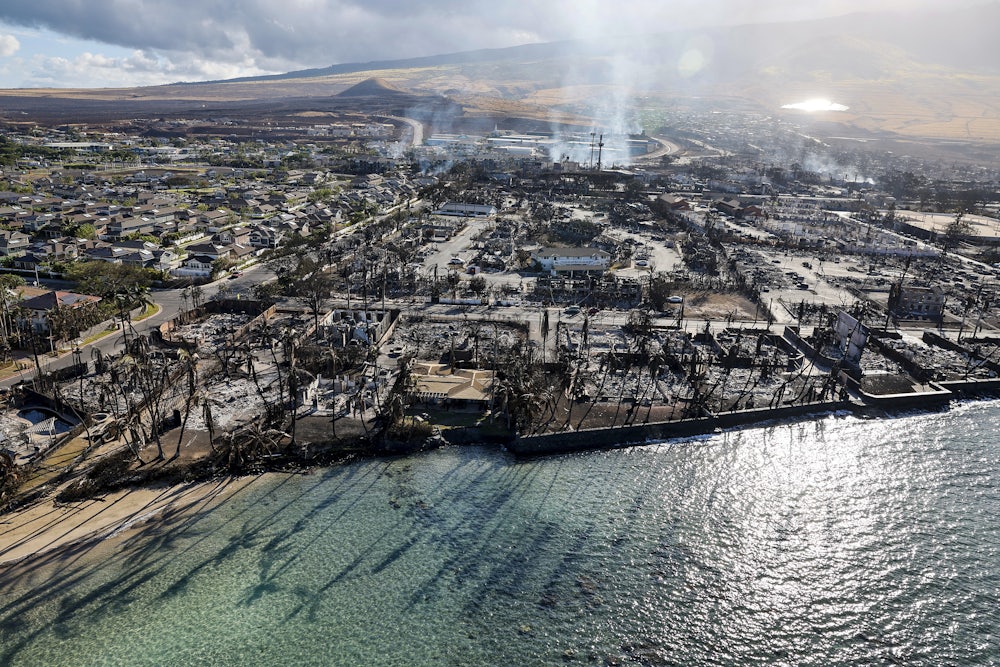On Sunday, July 30, of this year, The Wall Street Journal published a column by Allysia Finley, a member of the paper’s editorial board, entitled “Climate Change Obsession Is a Real Mental Disorder.” You could deduce from the title that the writer was no serious thinker, despite her degree from Stanford University. “The media wants you to know it’s hot outside,” she wrote sarcastically, quoting a line from a CNN broadcast: “‘Heat health emergency’: Nearly half the US at risk.” She also referenced a Bloomberg article with the headline “Extreme Temperatures Are Hurting Our Mental Health.” It turns out Finley also reads The New Yorker, for she quotes from a 4,400-word article it published, written by Jia Tolentino, that poses the question, “What To Do With Climate Emotions?,” which Tolentino answers thusly: “It may be impossible to seriously consider the reality of climate change for longer than ninety seconds without feeling depressed, angry, guilty, grief-stricken, or simply insane.” But of course Finley had a counter to that: “Climate hypochondriacs deserve to be treated with compassion, much like anyone who suffers from mental illness.”
The following day, July 31, the Journal published a screed by the infamous climate change–denier Bjørn Lomborg, titled “Climate Change Hasn’t Set the World on Fire.” It was not a coincidence that the Journal published these two pieces back-to-back when it did, at the precise turning of July into August. The month of July 2023 was, according to Gavin Schmidt, director of nasa’s Goddard Institute for Space Studies, “not just warmer than any previous July—it was the warmest month in our record, which goes back to 1880. The science is clear this isn’t normal. Alarming warming around the world is driven primarily by human-caused greenhouse gas emissions.” Lomborg, however, put most of his focus on the number of fires occurring around the globe annually, which he claimed has been steadily diminishing in this century. “In 2022, the last year for which there are complete data,” he assured his readers, “the world hit a new record-low of 2.2% burned area.”
During the summer of 2023, from the end of June to July 30, the city of Phoenix experienced temperatures of not less than 110 degrees, while also confronting the most 115-degree days in a single calendar year, and some days even hotter than that. The Arizona Republic ran a headline that begins “Will the Inferno Never End?” Of course, the inferno was not confined to Arizona; it was nationwide and worldwide. By August, the heat wave that had engulfed the South and Southwest of the United States during July spread to the Midwest, where in some places the heat index (combining both temperature and humidity) reached 100 degrees and above. The smoke came from the Canadian wildfires, mixed with the intense heat and humidity to create particularly noxious air for Midwesterners to breathe. It was reported that some people were making a schedule to do as much of their work as they could during the nighttime hours and get their sleep during the day. The saddest American event of the summer was the complete destruction by wildfires of the beloved Maui town of Lahaina. I write on the subject of community, and it was clear from the news coverage that Lahaina was a genuine close-knit community, but sadly one whose overseers were unprepared to handle such an event.
What was transpiring in terms of climate in the rest of the world this past summer? Ocean temperatures were the highest ever recorded. Much of Southern Europe was besieged by its own scorching temperatures and wildfires, along with torrential rains creating dangerously overflowing rivers. In Slovenia, unusually heavy rains created what the prime minister there called the worst natural disaster ever to hit the country, with bridges collapsing and streams of mud overwhelming the highways. Austria, just north of Slovenia, was also struggling with overflowing waters, though its situation was not as dire. Norway and Sweden, on a lesser scale, were experiencing unusually heavy rainfall, too. In Italy, Portugal, Cyprus, and Greece, raging, out-of-control wildfires were the problem. Meanwhile, in Mesopotamia (the word means “land between two rivers”), the cradle of civilization—the Fertile Crescent—farmers are abandoning the whole area, because the surrounding waters are almost completely dried up. As it was the birthplace of civilization in the West, it is now the augur of its impending doom.
On the other side of the world in early August, China, arguably the cradle of civilization in the East, was inundated with rain in the region surrounding the capital of Beijing. The rain continued for days and was the heaviest downpour there since records started being kept 140 years before. Floodgates around Beijing were opened to drain the water from the capital into nearby towns and agricultural areas, where it destroyed the homes and businesses of Chinese citizens still smarting from Xi Jinping’s draconian Covid-19 lockdown. John Kerry, the U.S. special presidential envoy for climate, had visited China (the world’s biggest polluter) not long before to restart a dialogue on climate, but no agreement was reached. China’s program calls for net zero emissions by the year 2060.
The greatest potential barrier to an effective global effort to combat climate change, however, is nested in an American institution, the Heritage Foundation. This think tank is devising a plan for America to abandon the use of alternative energy sources altogether and rely, as in the past, entirely on fossil fuels. The plan must assume the repeal by a Republican Congress of the Inflation Reduction Act of 2022, which is set to spend $370 million on alternative energy technologies, mostly in Republican districts. The coming congressional and presidential elections have momentous implications for the future of planet Earth.










